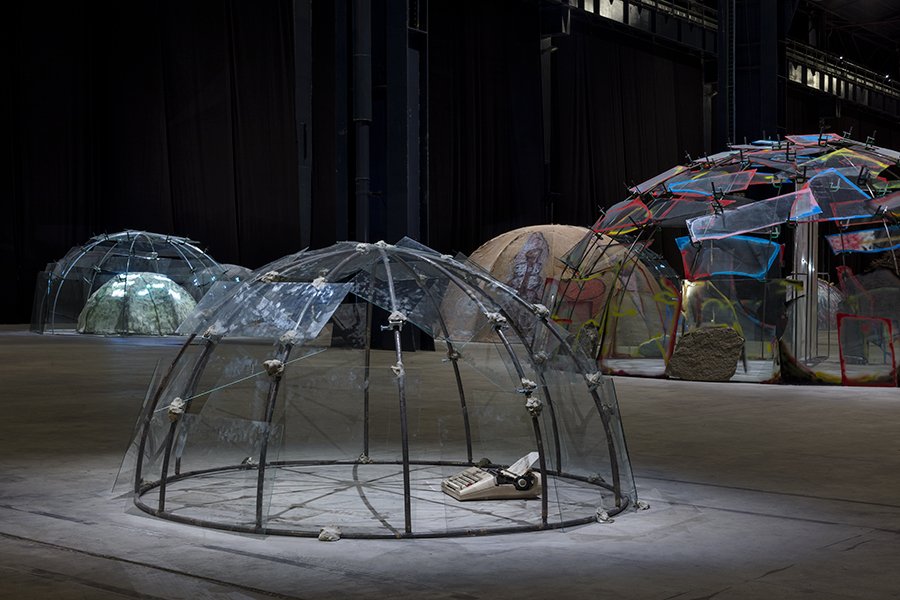Repurposing Arte Povera
By Jenny O’Gorman
Following a period of rampant materialisation which was particularly acute in Italy during the economic boom of the late 1950s and early 1960s, an avant-garde art movement formed, creating art out of everyday objects. The use of recycled cardboard, tissue paper, wire, mirrors was intended to create art, which was inaccessible in the conventional meaning, to almost all potential ‘consumers’. These conceptual artworks originated in Italy and were all the more provocative when compared to the country’s artistic traditions of oil paintings, bronze and marble sculptures. The polemical movement favoured commercially valueless, everyday ‘found’ materials, using them experimentally, rather than merely revisiting traditional approaches, and rejecting the increasing commodification of minimalism. This movement was dubbed Arte Povera in 1967 by Italian critic Germano Celant, meaning ‘poor’ or ‘impoverished’.
The sculptures originating from this movement were not dependent on the craftsman’s skill, instead they were conceptual, deliberately ambivalent, and inconsistent in their meaning. Artists connected to the movement ensured their work was ahistorical - often refusing conventional documentation of work, such as photographs or catalogues. But when these sculptures are removed from the usual prerequisites of art, aesthetic beauty, and skill, is Arte Povera just bad art? Or is it meaningful and especially relevant in today’s world?
Mario Merz (1925-2003) was a central figure in the Arte Povera movement. His artwork critiqued and questioned what art is and should be in a period of rapid economic development. His most acclaimed installation Igloos was shown retrospectively in the Pirelli Hangarbicocca in Milan. The area of display was an echoing hangar, far removed from a typical art gallery and its connotations of wealth, possession, and display. Mertz’s installation traced back to humanity’s nomadic past in a pre-industrial time, using fragile, commercially produced materials to construct traditional Inuit dwellings. Spot-lit with harsh lighting, jagged-edged sheets of glass and wire, the igloos can be considered to represent a juxtaposition between the habitable and uninhabitable. The thirty igloos in the exhibition created a unique landscape – the viewer could walk among them in no particular order, considering the ironic play on function and genre. In his combination of forms and mixed media, he created an inherent instability in the concept of shelter, destabilising its meaning by reducing his shelters into eerie, ephemeral, and inhospitable shells.
Mario Merz, Igloos, 2018, Pirelli Hangar, Bicocca, Milan
In recent years, various artists have attempted to replicate the Arte Povera style, but their method of display and lack of authentic purpose has been condemned by some. In 2017, Jonathan Jones’s disparaging two-star review of the Estorick collection in London discussed the so-called failure of contemporary artists in their attempts to respond to Arte Povera. He suggests that the ‘heart and soul of the movement gets lost in translation’ and that works by artists such as Gavin Turk and Ceal Floyer lack impact, writing that ‘their works look aimless and trivial’ compared with those by the likes of Pistoletto, Mertz and Penone. The contemporary artwork, shown alongside the original sculptures from the 1960s and 70s, seem out of place in ‘two suburban rooms’ as opposed to the echoing warehouses which contributed to the rebelliousness of Arte Povera. It is clear that many feel the movement was responding to a specific time and place, a purpose which twenty-firstcentury emulations are distinctly lacking.
Ceal Floyer, Ladder, 2010, Lisson Gallery, London
However, the concepts underpinning Arte Povera are being increasingly recognised as hugely important as our awareness of the climate crisis grows. American sculptor Angela Pozzi has turned to repurposed eco art, constructing massive sculptures of the sea animals. Her refashioning of debris collected from southern Oregon beaches inspired her visceral artworks, engaging in a new perspective regarding plastic pollution. Another artist, Giuseppe Penone, has made various sculptural trees beginning in 1969 and continuing until the present day. He assimilates natural materials such as clay, stone and wood to draw attention to the earth’s processes. For instance, his installation Tree of Twelve Metres uses whittled layers of wood, drawn from felled trees to reduce a tree to its essential, internal core and stumpy branches. He returns the tree to a formative stage of growth, encouraging visitors to pause and reflect on nature for a moment in a fast-paced, mechanised world.
Guiseppe Penone, Three of 12 Metres’ Wood, Tate Modern, London
By using materials such as soil, artists of the Arte Povera movement connected their sculptures to nature, a melding of the everyday and art which has become increasingly relevant in environmental artwork today. Artists such as Olafur Eliasson have gone further in exploring the theme of temporariness, disregarding man-made material entirely and limiting the artists involvement - letting her materials speak for themselves. Her infamous exhibition Ice Watch illustrated the effects of global warming. She transported ice from Greenland to Paris, roughly carved it apart and then installed the pieces in a circle at the Place du Panthéon. Among urban surroundings, they began to melt. We can link this concept back to Mario Mertz’s ‘Igloos’ and his idea of fragile habitation but this time on a global scale, affecting the habitats of animals and wildlife too.
Arte Povera has been adapted to respond to modern issues, continuing to make its mark on art history by influencing contemporary art practices. We are beginning to see artists repurposing the ideas of the Arte Povera movement - and their new purpose is tackling the climate crisis.
Notes:
Jones, Jonathan. ‘Poor Art | Arte Povera Review – The Show that Proves Britain on the Blink’, The Guardian, 21 September 2017 https://www.theguardian.com/artanddesign/2017/sep/21/poor-art-arte-povera-review-british-responses-estorick



